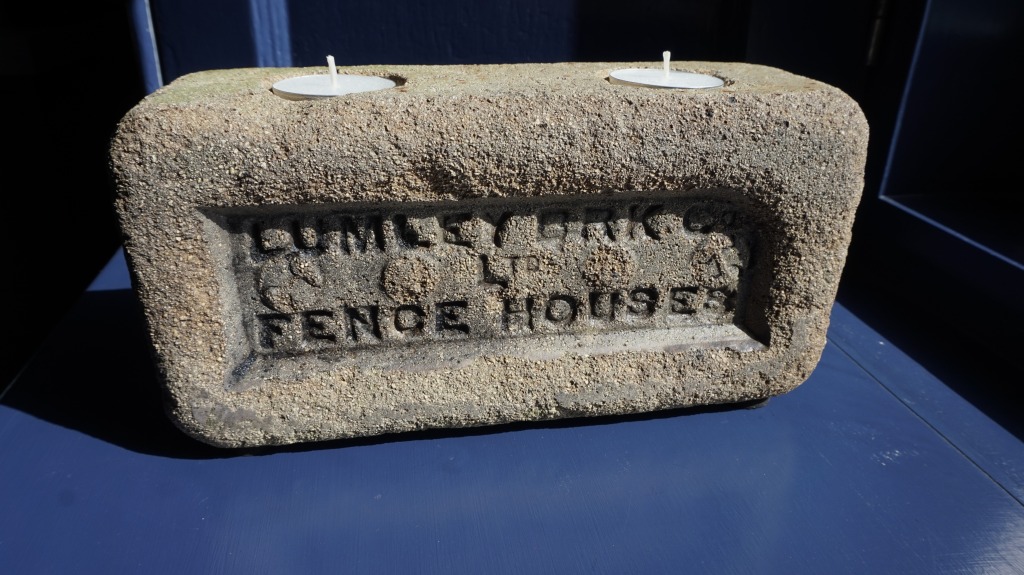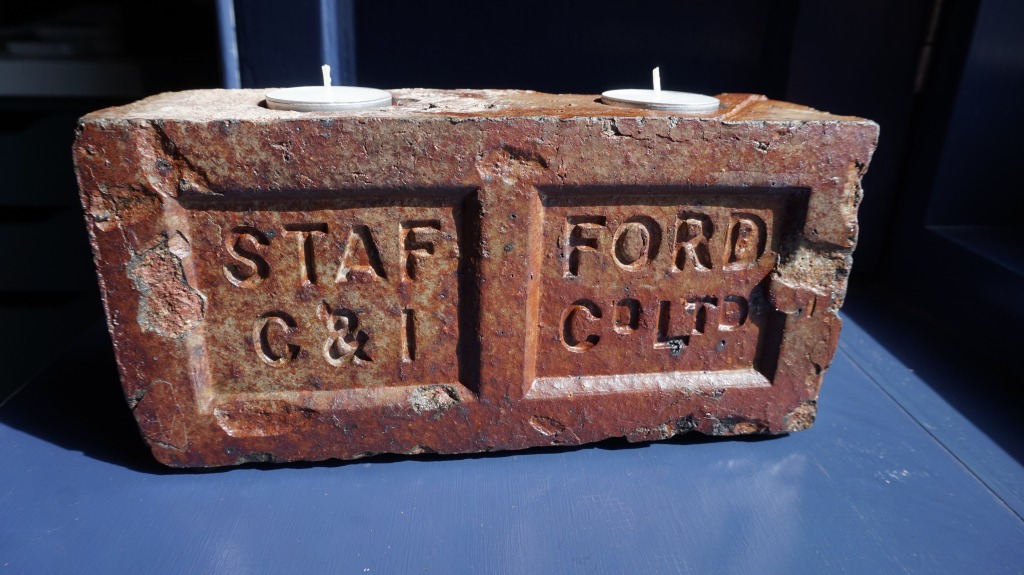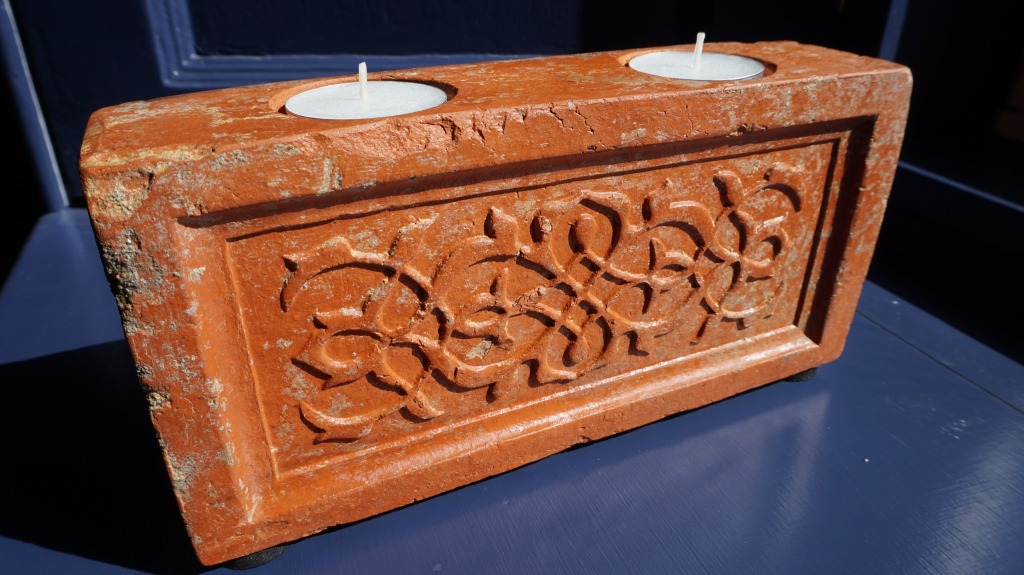Some of a new batch of brick candle holders during the warmer months. In the freezing cold Scottish weather, I learnt that (a) soaking bricks in at least three changes of cold water (in large tubs) and (b) putting on full waterproofs over many layers to core and clean these isn’t that much fun!
In addition to some Scottish bricks I found on various East Lothian beaches (Edinburgh, Niddrie and Roslin), I also found this one from the Lumley Brick Co, Fence Houses, County Durham;

Lumley Brick Company produced enamel bricks in four colours and this one still has small remnants of cream enamel on the ‘frog’ (the indent with the name) and on the base. This brickworks was in existence from the 1870’s to 1938 (information from the very comprehensive ‘Old Bricks – history at your feet’ website, click here).
Further afield, on our travels to the Peak District, I found a few of these lovely deep red/purple Stafford C&I (coal and iron) Co Ltd bricks. From the website above, I discovered that the Stafford Coal & Iron Company brickworks were located in Stoke on Trent from 1874 to the 1960’s. It’s thought that these red and purple bricks were produced sometime between 1874 and 1947;

However, my favourite recent acquisition (thanks to my in-laws) are these terracotta bricks from the Charente region in southern France. These antique bricks are around 200 years old and feature a beautiful stylised foliage design. Trying to find the exact brick/tile works that made these proved to be a bit difficult, but my wife did a bit of research and we think these were made by Tuilerie Delage brickworks in Chardat (established in 1825);

These (and many more) brick candle holders can be purchased from my Etsy shop- just follow this link.







